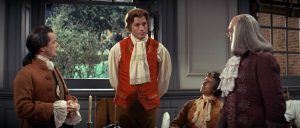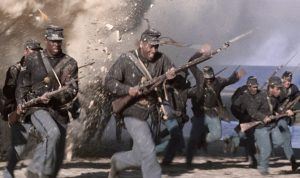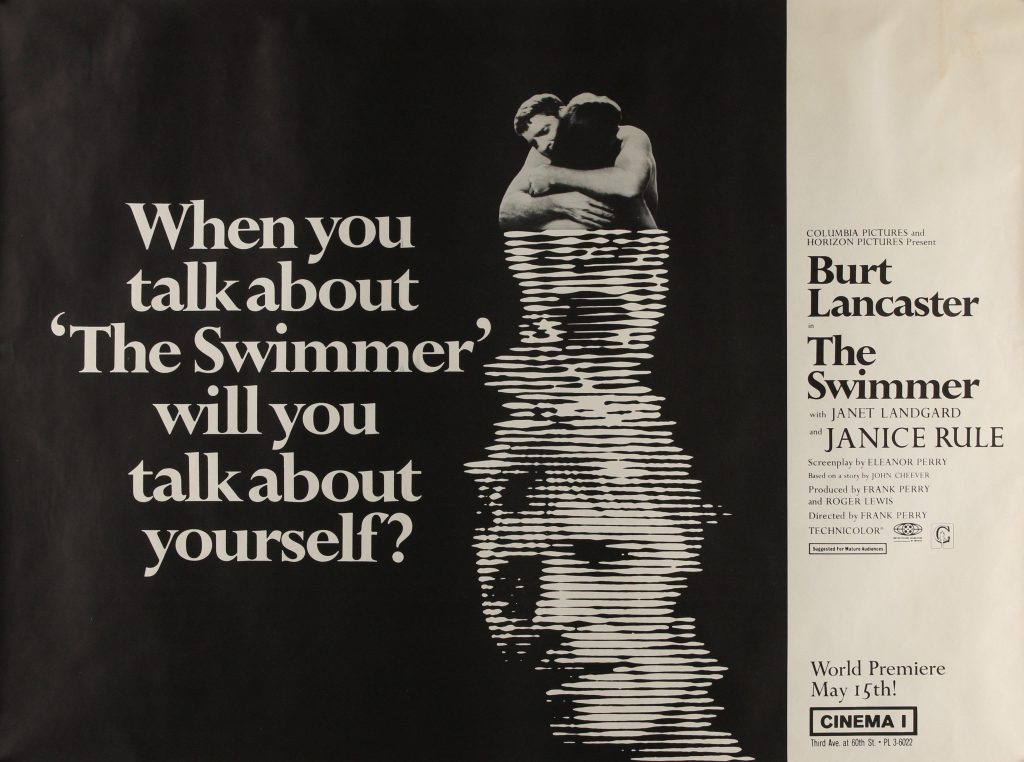George Santayana isn’t a household name, but something he said is one of the best-known quotations in human history: “Those who cannot remember the past are condemned to repeat it.” As a bit of a history buff, I’m a big fan of that quote, and I think it is, for the most part, very true. If you look at what is happening today, you can find similar situations in the not-too-distant past.
The thing is, it can be hard to learn history. Sure, you’ll get some in school, but you don’t get into the nitty-gritty of it all, and most history textbooks are so dryly written they’ll put you to sleep. Outside of school, there’s a wealth of amazing books about pretty much every event in human history, but who has the time to read them all? Well, don’t you worry, because I’m here to help you out with a handy dandy guide to the history of the United States that lets you learn while you chow down some popcorn! Sure, some of the stuff you’ll learn will be fiction created to up the drama, but hey, how has not actually knowing the facts ever kept people from acting like we know what we’re talking about? Here, for your learning pleasure, is the history of the United States in film!
When Columbus sailed the ocean blue…
1492: Conquest of Paradise (1992)
The story of the United States starts nearly 300 years before the Second Continental Congress would tell King George to shove it up his crown. Without Christopher Columbus thinking he was a smarty-pants who would find a quicker way to the East Indies, who knows what the world would look like now? Hell, the strongest country on Earth could be under the control of a madman with a senate that is too chicken to stand up to him! Thank goodness we aren’t in that reality!
Bonus Trivia: This was one of four movies about Columbus that were released in 1992. All four were critical and box office failures.
Terrence Malick brings his talents to the sad but true love story of 27-year-old John Smith and 11-year-old Pocahontas, though he makes it a little more palatable by having the parts played by 29-year-old Colin Farrell and 15-year-old Q’orianka Kilcher. Come for the history, but stay for the beautiful cinematography.
Bonus Trivia: While The New World shows the Powhatans, Pocahontas’ people, as peaceful and innocent, they were actually very violent. Pocahontas’ father, Powhatan, who was the leader of the Powhatans, conquered 30 tribes before the English showed up.
Don’t tread on me
The birth of America happily explained in song! See what John Adams, Ben Franklin, and Thomas Jefferson went through to convince the rest of the continental congress to vote for independence! Find out which of our founding fathers were alcoholics! See the musical that influenced Lin-Manuel Miranda!
Bonus Trivia: The song “Cool, Considerate Men,” which appears in the original Broadway production, is missing from the film! After a private early screening of the movie, then-president Richard Nixon believed that the song was criticizing his administration. Not wanting to stir controversy and piss off the POTUS, Warner Brothers forced the director to take the scene out.
The Patriot (2000)
Back before Mel Gibson was making horror movies about Jesus and drunkenly demeaning police officers, he was arguably the biggest star in movies. In The Patriot, he plays Benjamin Martin, a man who didn’t exist but is based on a number of actual Revolutionary War fighters, most notable Francis Marion aka The Swamp Fox, one of the inventors of guerrilla warfare.
Bonus Trivia: When The Patriot was released, plenty of controversy came with it. Historian Christopher Hibbert claimed the movie white-washed the true story of Francis Marion. Spike Lee called out the erasing of Marion being a slave owner, while the British paper The Guardian called Marion “a serial rapist who hunted Red Indians for fun”. The movie was also caught in the middle of Sony’s fake critic scandal.
The mystic chords of memory…
Gettysburg (1993)
Based on Michael Shaara’s amazing book The Killer Angels and arguably the best film ever made about the American Civil War, Gettysburg focuses on two men at the historic battle: Colonel Joshua Chamberlain of the Union Army and General Robert E. Lee of the Confederate Army. With an all-star cast led by Jeff Daniels, Sam Elliott, and Martin Sheen, the movie, which clocks in at four and a half hours, flies by. Director Ronald Maxwell, with untold amounts of help from his art department, went to great lengths to recreate the look of the most famous battle of the Civil War. I should warn you, there are some pretty bad fake mustaches in the movie.
Bonus Trivia: If you keep an eye out, you’ll catch a glimpse of documentarian Ken Burns playing an aide to Major General Hancock during Pickett’s Charge.
If there’s anything Hollywood loves, it’s having a white guy fight against racism for black people, and Glory, based on the true story of Captain Robert Shaw and the 54th Massachusetts Volunteer Infantry, gave them one hell of a story to play with. Along with being Matthew Broderick’s best film (don’t @ me), Glory helped push Denzel Washington’s career to the next level, getting him his first Academy Award. The movie itself is a classic and tells a story that certainly deserved to be told.
Bonus Trivia: Glory was a box office bomb, trounced by Driving Miss Daisy, which had to be a bit of a weird weekend for Morgan Freeman, being that he stars in both films.
Gangs of New York (2002)
Martin Scorsese, ever a New Yorker, chose to do a New York movie set during the Civil War, and it’s great stuff. It’s a mix of true events, like the Draft Riots and the gangs of the Five Points battling it out, and some heavy slices of fiction. Bill the Butcher, for example, was real, but he wasn’t from the Five Points and he had been killed a decade before the Draft Riots.
Bonus Trivia: Scorsese and cinematographer Dante Ferretti wanted to build a full church so they could do a shot that went around the whole building, but Miramax’s head honcho Harvey Weinstein shot the idea down, believing that it would cost too much. When Weinstein visited the set with Tom Cruise, Scorsese and Ferretti got Cruise to talk Harvey into upping the budget to cover the cost of the full church set. After it was built, Scorsese decided against the 360 shot.
Don’t that picture look dusty?
 The Assassination of Jesse James by the Coward Robert Ford (2007)
The Assassination of Jesse James by the Coward Robert Ford (2007)
After the Civil War, the story of America changed drastically. Americans, whom the world had already seen as rough and tumble, became rebels. The term “cowboy” caught on, and the more criminal aspects of America began to be looked at as heroic. No one captures this better than Jesse James, a man who was crowned as America’s Robin Hood even though he made his living stealing from anyone he could and keeping it for himself. Andrew Dominik’s film, based on the book by Ron Hansen, focuses on the post-Civil War existence of Confederate families and the psychology of stalkers and celebrities in a way I don’t think any other film ever has.
Bonus Trivia: Shia LaBeouf was originally considered for the role of Robert Ford, but it was decided that he was too young for the part. Nick Cave makes a cameo as a singer who angers Robert Ford when he sings the historically inaccurate but still catchy song The Ballad of Jesse James.
Butch Cassidy and the Sundance Kid (1969)
Far less factually based than The Assassination of Jesse James by the Coward Robert Ford, this classic (directed by George Roy Hill with a script by William Goldman) plays on the idea of the American myth by showcasing the two most famous members of the Hole in the Wall Gang as played by Paul Newman and Robert Redford. The movie, about two train robbers who run off to Bolivia when the Union Pacific forms a super-posse to hunt them down, is a look at how myths are built.
Bonus Trivia: Before Redford landed the role of Sundance, the part was offered to Jack Lemmon, Steve McQueen, and Warren Beatty. McQueen initially took the role, but backed out after a disagreement with Paul Newman.
And that’s all for now. In part two, we’ll cover U.S. history from World War I to the financial crisis of 2007. Lots of real fun and lots of war!
Derek Faraci lives in historic Farmington Hills, Mich.






